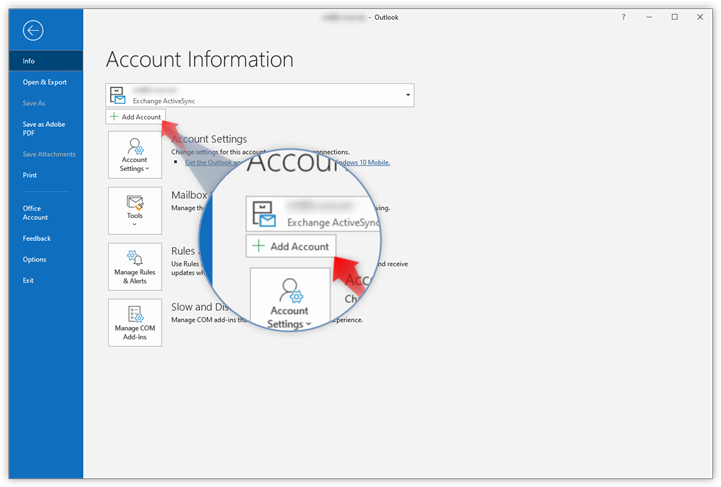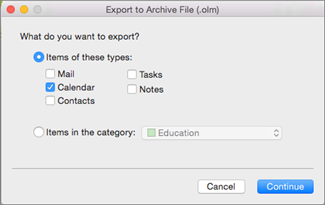Can A Windows Outlook Mail Backup Be Used On Outlook For Mac
- Can A Windows Outlook Mail Backup Be Used On Outlook For Macs
- Can A Windows Outlook Mail Backup Be Used On Outlook For Mac Os
Outlook 2011 for Mac will ask you what you want to backup. On this screen select Outlook for Mac Data File (.olm) and Items of the following types. Then select the types of items that you want to back up. To transfer messages and other items from a Windows-based computer to a Mac, Outlook for Mac can import Outlook Data Files (.pst) that were created in Outlook for Windows. Transfer the.pst file from your Windows computer to your Mac. On the Outlook for Mac File menu, select Import.

Instructions in this article apply to Outlook 2019, Outlook 2016, Outlook 2013, Outlook 2010, and Outlook for Microsoft 365. Back up or Copy Your Outlook Mail, Contacts, and Other Data Creating a backup copy of your Outlook data (or moving it to a different computer ) can be as easy as copying a single file. The Microsoft Outlook is a very popular email client that is used by Mac and Windows both. But both the email clients use a different file format to store mailbox data. That is why users switching from Mac to.
Original KB number: 2800895
We do not recommend that you change the default location of your Profile folder for Microsoft Outlook 2016 for Mac, or your Identity folder for Microsoft Outlook for Mac 2011 to an external hard disk or to a network. Additionally, using a mail identity or profile that is located on an external hard disk or on a network is not supported in either version of Outlook for Mac.
More information
If you already have a copy of Outlook for Mac, simply launch it, choose File Import, select Outlook Data File (.pst or.olm) in the first Import window, click the Next button, select Outlook for.
Outlook 2016 for Mac caches your mail items in a profile in your home folder at the following location:
~/Library/Group Containers/UBF8T346G9.Office/Outlook/Outlook 15 Profiles
Outlook for Mac 2011 caches your mail items in an identity in your home folder at the following location:
~/Documents/Microsoft User Data/Office 2011 Identities
Like Microsoft Entourage for Mac 2008, Outlook 2016 for Mac and Outlook for Mac 2011 are intended to be purely locally cached mail clients. Changing the location or using a mail identity that is located on an external hard disk or a network is not supported.
E-mails are one of the easiest and convenient ways to communicate with the rest of the world these days. Whether it is a business meet or a personal event details, everything can be done over mail only. With such vast usage, you can’t afford to lose a single e-mail as it may contain very important and crucial information in it.
This is how Windows Outlook appears like:
Microsoft Outlook is your best bet for sending and receiving business e-mail. The reason being is its supreme usability and peerless performance. It will not help you to send e-mails but also maintain an events calendar, takes notes and creates journals easily. You can easily use it as a stand-alone application or configure it with other services like SharePoint and Microsoft Exchange Server.
With such wide use, Microsoft Outlook has made ways to many business houses and companies. If you are also the one which uses it for business correspondence then you should know how to take back of your Microsoft Outlook e-mail at any point in time.
We have come up with some useful way to do it at the various operating systems as we know that not all use the same operating system. Have a look and help out yourself to get a backup of all your important e-mails instantly.
How to backup your Microsoft Outlook emails in Windows Laptops/Desktops?
To do so, follow these steps.
1. Open Microsoft Outlook on your PC and then click on “File”.
2. In File dialogue box, click on Import and Export. An import and export wizard will open up in front of you. Click on “Export a file” in the list and then click “Next”.
3. Click on “Personal Folder File (.pst) followed by “Next”.
4. List of folders will pop-up in front of you. Choose the one which you want to take backup and restore. In case, you want to take back up of your Inbox then click on “Inbox” and then click on “Next”. Don’t forget to click on “Include Subfolders” as it will take backup for all the subfolders as well.
5. Browse the place where you want to store the backup of your Outlook mails. Once selected, chose the action that you want to do like you want to keep the duplicate items or not. Then click on “Finish”.
All your Microsoft Outlook emails now have a back-up at your laptop.
How to take Backup of your Microsoft Outlook email on Mac?
Taking a backup of your Microsoft Outlook e-mails on your Mac operating system need to be done by following set of steps
1. Open Outlook on your Mac operating system.
2. Click on Tool tab located on the topmost side of the toolbar then click on “Export” option.
3. Upon clicking on it, you will get a list of actions that you can perform. To take a backup of your Outlook mail, click on “Outlook for Mac Data File” option. Also, mark all the item types to ensure that all your data get a backup. Once you select all your preferences, click the right arrow locate at the bottom of the dialog box.
4. Once you proceed with the above-mentioned step, Outlook will ask you whether you want to delete the exported items or want to keep them. Mark your preferences and then click on the right arrow located at the bottom of the window. We suggest you not to delete them as it is not a good choice.
5. Once you proceed with this step, a new window will pop-up where you need to give a name to your back up file and chose a place to save it. Give it a name and chose the place then proceed by clicking on “Save”. All your Microsoft Outlook e-mail gets a back up now.
How to take backup of Outlook emails on Linux?
Linux, the next-generation free operating system is widely used now. If you have recently switched to it then you might need to a back up of your Microsoft Outlook e-mail to it. Taking a back-up of your Microsoft Outlook e-mails to Linux is a little lengthy process as you need Thunderbird for it. Readout carefully and then proceed.
Step 1: Install Thunderbird to your desktop to take back up of your Microsoft Outlook Mail.
• Download Thunderbird.
• Run Mozilla Thunderbird.
• Don’t set Thunderbird as your default mailer.
• Select Import option and then click on Mail> Next.
• Click Outlook > Next. Wait till the procedure gets complete and close the Thunderbird application upon completion.
Step 2: Move Thunderbird mail to Linux desktop
• Find your profile in Thunderbird application.
• Click on Start followed by Run and type “cmd”. Hit enter.
• Type C:> cd %APPDATA%Thunderbird
• C:> cd Profiles commands in the command box.
• Search for “Local Folders” and use
C:> cd “Local Folders”

C:> cd “Outlook Mail.sbd”

Command to go to that folder.
• Copy all the files present in “Outlook Mail.sbd” to an external storage device like pen drive and hard disk. You can also copy them directly to your Linux directory if you have a working internet connection.

Can A Windows Outlook Mail Backup Be Used On Outlook For Macs
• Open your mail using Linux Thunderbird client.
Step 3: Import them all to Evolution
• For future, copy all the emails and files to Evolution local directory using GUI tool.
Creating a backup for all your Outlook e-mails is always a good idea as it helps to prevent any sudden loss of a detail. In addition, it is also useful for the future reference purpose. Losing an e-mail might have a severe consequence. To prevent this, we recommend taking regular backup of them.
Usually, Inbox is the chief folder for that gets a backup as all our important e-mails come to that folder only. However, there are some important e-mails which make their ways to the Spam folder as well. So, we would suggest you have a look of your Spam folder before taking a backup. If you find any important e-mail in that then move it to “Inbox” and then take the backup.
Also Read:
How to create a Tag on Mac?
Can A Windows Outlook Mail Backup Be Used On Outlook For Mac Os
How to recover permanently deleted files from Google Drive/Google Docs?
